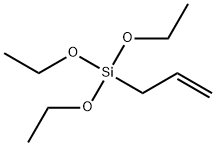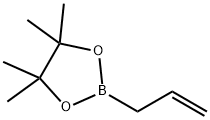Probenazole
- CAS NO.:27605-76-1
- Empirical Formula: C10H9NO3S
- Molecular Weight: 223.25
- MDL number: MFCD00274602
- SAFETY DATA SHEET (SDS)
- Update Date: 2024-08-15 16:24:08

What is Probenazole?
The Uses of Probenazole
Probenazole is used for the control of rice blast and bacterial diseases in paddy rice.
The Uses of Probenazole
Probenazole can be used in agricultural use and biological study of preparation of nicotinamide compounds containing chiral oxazoline and application thereof as agricultural antimicrobial agent.
Definition
ChEBI: Probenazole is a member of the class of 1,2-benzothiazoles that is 1,2-benzothiazole 1,1-dioxide substituted at position 3 by an allyloxy group. A fungicide used to control rice blast. It has a role as a plant activator and an antifungal agrochemical. It is a 1,2-benzisothiazole, an aromatic ether, a sulfone and a benzothiazole fungicide. It is functionally related to a saccharin.
Metabolic pathway
Probenazole is metabolised readily in plants by hydrolytic ring opening followed by a cyclisation-induced dealkylation to form saccharin which is N-glucosylated. Saccharin may be the active metabolite of probenazole. No information on the fate of probenazole in soil or animals could be located.
Metabolism
Probenazole is taken up by the rice plants after spray or paddy application and distributed throughout the plants as parent compound or as one of its metabolites . The main metabolites of probenazole in rice are 2-sulfamoyl-allyl-benzoate, saccharin, and N-β- D-glucopyranosylsaccharin (37).
Degradation
Probenazole is a stable compound but it is subject to hydrolysis.
Properties of Probenazole
| Melting point: | 136~141℃ |
| Boiling point: | 220°C (rough estimate) |
| Density | 1.3588 (rough estimate) |
| vapor pressure | 5 x 10-4 Pa (20 °C) (est.) |
| refractive index | 1.6500 (estimate) |
| storage temp. | Sealed in dry,2-8°C |
| solubility | Chloroform (Slightly), Methanol (Slightly) |
| form | Solid |
| Water Solubility | 150 mg l-1 |
| pka | -2.43±0.20(Predicted) |
| color | White to Off-White |
| CAS DataBase Reference | 27605-76-1(CAS DataBase Reference) |
| NIST Chemistry Reference | Probenazole(27605-76-1) |
Safety information for Probenazole
| Signal word | Warning |
| Pictogram(s) |
 Exclamation Mark Irritant GHS07 |
| GHS Hazard Statements |
H315:Skin corrosion/irritation H319:Serious eye damage/eye irritation H335:Specific target organ toxicity, single exposure;Respiratory tract irritation |
| Precautionary Statement Codes |
P261:Avoid breathing dust/fume/gas/mist/vapours/spray. P305+P351+P338:IF IN EYES: Rinse cautiously with water for several minutes. Remove contact lenses, if present and easy to do. Continuerinsing. |
Computed Descriptors for Probenazole
New Products
Tert-butyl bis(2-chloroethyl)carbamate 4-Methylphenylacetic acid N-Boc-D-alaninol N-BOC-D/L-ALANINOL 3-Morpholino-1-(4-nitrophenyl)-5,6-dihydropyridin- 2(1H)-one Furan-2,5-Dicarboxylic Acid Tropic acid 1,1’-CARBONYLDIIMIDAZOLE DIETHYL AMINOMALONATE HYDROCHLORIDE R-2-BENZYLOXY PROPIONIC ACID 1,1’-CARBONYLDI (1,2-4 TRIAZOLE) N-METHYL INDAZOLE-3-CARBOXYLIC ACID (2-Hydroxyphenyl)acetonitrile 4-Bromopyrazole 5-BROMO-2CYANO PYRIDINE 5,6-Dimethoxyindanone 5-broMo-2-chloro-N-cyclopentylpyriMidin-4-aMine 2-(Cyanocyclohexyl)acetic acid 4-methoxy-3,5-dinitropyridine 2-aminopropyl benzoate hydrochloride 1-(4-(aminomethyl)benzyl)urea hydrochloride diethyl 2-(2-((tertbutoxycarbonyl)amino) ethyl)malonate tert-butyl 4- (ureidomethyl)benzylcarbamate Ethyl-2-chloro((4-methoxyphenyl)hydrazono)acetateRelated products of tetrahydrofuran








You may like
-
 Probenazole 95% (HPLC) CAS 27605-76-1View Details
Probenazole 95% (HPLC) CAS 27605-76-1View Details
27605-76-1 -
 1975-50-4 98%View Details
1975-50-4 98%View Details
1975-50-4 -
 2-HYDROXY BENZYL ALCOHOL 98%View Details
2-HYDROXY BENZYL ALCOHOL 98%View Details
90-01-7 -
 2-Chloro-1,3-Bis(Dimethylamino)Trimethinium Hexafluorophosphate 221615-75-4 98%View Details
2-Chloro-1,3-Bis(Dimethylamino)Trimethinium Hexafluorophosphate 221615-75-4 98%View Details
221615-75-4 -
 61397-56-6 CIS BROMO BENZOATE 98%View Details
61397-56-6 CIS BROMO BENZOATE 98%View Details
61397-56-6 -
 14714-50-2 (2-Hydroxyphenyl)acetonitrile 98+View Details
14714-50-2 (2-Hydroxyphenyl)acetonitrile 98+View Details
14714-50-2 -
 118753-70-1 98+View Details
118753-70-1 98+View Details
118753-70-1 -
 733039-20-8 5-broMo-2-chloro-N-cyclopentylpyriMidin-4-aMine 98+View Details
733039-20-8 5-broMo-2-chloro-N-cyclopentylpyriMidin-4-aMine 98+View Details
733039-20-8